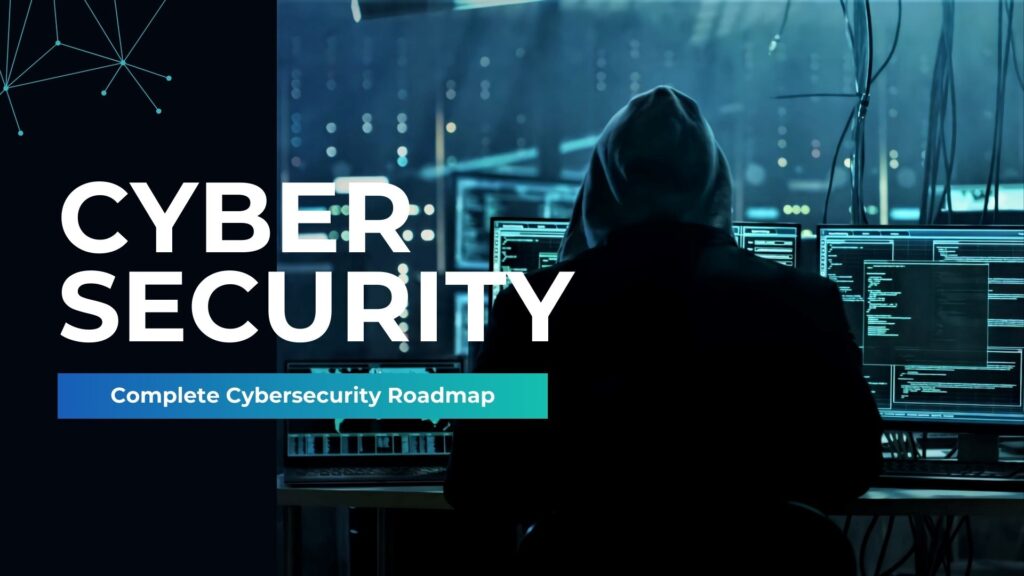Breaking into the cybersecurity field might seem daunting at first, but with the right roadmap and dedication, you can secure your first cybersecurity job in less than a year. This guide lays out a clear, step-by-step plan that covers essential skills, certifications, and practical advice to help you build a strong foundation and stand out to employers. Whether you’re new to tech or transitioning from another career, this roadmap is designed to get you ready for an entry-level cybersecurity role in about 7 to 10 months, assuming you can dedicate 3 to 5 hours of focused study or practice each day.

Building a Strong IT Foundation
The first and arguably most crucial step is to establish a solid foundation in general IT knowledge. Many aspiring cybersecurity professionals skip this stage, but it’s essential, especially if you lack prior experience in technology or IT. Imagine someone asking you to fix their computer or troubleshoot Wi-Fi issues—if you have no clue where to start, this is your starting point.
A great way to build this foundation is by pursuing the CompTIA A+ certification. This well-recognized credential covers the basics of installing operating systems, handling common PC problems, managing essential software, and more. Spending 3 to 5 hours a day studying can get you through this phase in about one to two months.
It’s important to note that while certifications like CompTIA A+ provide a solid groundwork, they are not endorsements or sponsorships—these suggestions are based purely on their reputation for imparting foundational knowledge in IT and cybersecurity.
Mastering Computer Networking
Understanding how data moves across networks is a core skill in cybersecurity, whether you aim to defend systems or test their vulnerabilities. Networking knowledge helps you grasp how attacks happen and how to prevent them.
Spend the next one to two months diving into networking concepts such as:
- OSI and TCP/IP models
- Common protocols like HTTP, HTTPS, and TCP
- IP addressing and subnetting
- Basics of routers, switches, and firewalls
To formalize your learning, consider certifications like CompTIA Network+, which covers general networking principles without focusing on any specific brand. If you want to go deeper and stand out more, the Cisco Certified Network Associate (CCNA) is a gold standard certification that focuses on Cisco’s networking equipment but is more challenging.
Remember, certifications alone won’t guarantee a job. Employers want to see practical, hands-on skills alongside your certificates. Use labs, simulators, and real-world practice to build your expertise.
Operating Systems: Windows and Linux
Cybersecurity roles often require proficiency with operating systems, especially Windows and Linux. If you’re just starting, pick one to focus on based on your familiarity—for example, Windows if it’s your daily driver. Get comfortable with:
- File permissions
- System logs
- Basic user management
However, in the long run, learning both Windows and Linux is crucial. Linux is dominant in servers, cloud environments, and many security tools, making it indispensable for cybersecurity professionals.
This stage may take one to two months. If you want a structured certification, CompTIA Linux+ is an option, but it’s not as impactful on your resume as Network+ or CCNA. Pursue Linux+ more for the knowledge than the credential itself.
Learning to Code: Why Python is Your Best Bet
You don’t need to be a coding expert to succeed in cybersecurity, but understanding programming fundamentals will significantly boost your capabilities. The best language to start with is Python because it’s beginner-friendly and widely used in cybersecurity for automation, scripting, and vulnerability testing.
In addition to Python, learning Bash for Linux or PowerShell for Windows is highly recommended. These scripting languages are essential for automating tasks such as file management, user creation, or system checks.
Once you grasp one programming language, picking up others becomes much easier. You can find many beginner tutorials online that are easy to follow and will get you started quickly.
Cybersecurity Fundamentals: The Core Concepts
With IT basics, networking, operating systems, and some coding knowledge under your belt, it’s time to dive into cybersecurity fundamentals. This phase introduces you to the principles of protecting systems and data from threats.
Two certification paths stand out here:
- CompTIA Security+: A widely recognized entry-level certification often required in many roles, especially government jobs.
- Google Cybersecurity Professional Certificate: A newer, online guided program that provides a comprehensive introduction to cybersecurity concepts.
Both paths offer solid foundations, but Security+ is generally more recognized in the industry. Choose the one that fits your learning style best.
Defensive Security (Blue Teaming)
Defensive security, also known as Blue Teaming, focuses on protecting systems from attacks. This includes detecting threats, analyzing logs, and maintaining network security.
Spend time learning how to:
- Detect and respond to cyber threats
- Analyze system and network logs
- Implement security measures for networks and endpoints
For certifications, consider:
- Cisco CyberOps Associate: A well-respected certificate focusing on operational security.
- PSA+ by TCM Security: A hands-on certification emphasizing practical skills.
- PTL1 by Security Team Blue: Focused on real-world defensive tasks.
Offensive Security (Red Teaming)
Offensive security is about simulating attacks to test system weaknesses, often called Red Teaming. This phase involves scanning networks, exploiting vulnerabilities, and practicing real-world hacking skills.
Spend one to two months practicing on platforms like TryHackMe or Hack The Box, which provide safe environments to hone your skills.
Recommended certifications include:
- eJPT (eLearnSecurity Junior Penetration Tester): A hands-on, entry-level red team certification.
- PJP by TCM Security: A beginner-level penetration testing certificate.
- CompTIA PenTest+: Another popular certification focusing on penetration testing skills.

Putting It All Together: Your 7 to 10 Month Journey
If you follow this roadmap and dedicate 3 to 5 hours daily, you can be job-ready in roughly 7 to 10 months. Here’s a quick recap of the timeline:
- IT Fundamentals (CompTIA A+): 1-2 months
- Networking (CompTIA Network+ or CCNA): 1-2 months
- Operating Systems (Windows/Linux basics): 1-2 months
- Coding (Python, Bash, PowerShell): Ongoing during other stages
- Cybersecurity Fundamentals (Security+ or Google Certificate): 1 month
- Defensive Security (Blue Team): 1 month
- Offensive Security (Red Team): 1-2 months
Everyone learns at their own pace, so don’t stress if you need more time. The key is consistent practice and building real hands-on skills alongside certifications to make your resume stand out.
Frequently Asked Questions (FAQ)
Do I need a college degree to get into cybersecurity?
No, a college degree is not mandatory. Many employers value skills and certifications over formal education, especially if you have proven hands-on experience.
Which certification should I get first?
Start with foundational certifications like CompTIA A+ and Network+. These build your IT and networking knowledge, which is critical before diving deeper into cybersecurity.
Is coding necessary for cybersecurity?
While you don’t need to be an expert coder, learning Python and scripting languages like Bash or PowerShell will greatly enhance your ability to automate tasks and understand security tools.
How important are certifications compared to hands-on skills?
Certifications help validate your knowledge and can get your resume noticed, but employers highly value practical, hands-on experience. Balance both for the best results.
Can I skip learning Linux if I already know Windows?
It’s highly recommended to learn both. Linux is widely used in servers, cloud platforms, and cybersecurity tools, so familiarity with Linux is crucial for a well-rounded skill set.
What’s the difference between defensive and offensive security?
Defensive security (Blue Team) focuses on protecting and securing systems from attacks. Offensive security (Red Team) involves simulating attacks to find vulnerabilities and improve defenses.
Quick Links:
https://duogeeks.com/
https://duogeeks.com/services/website-design/
